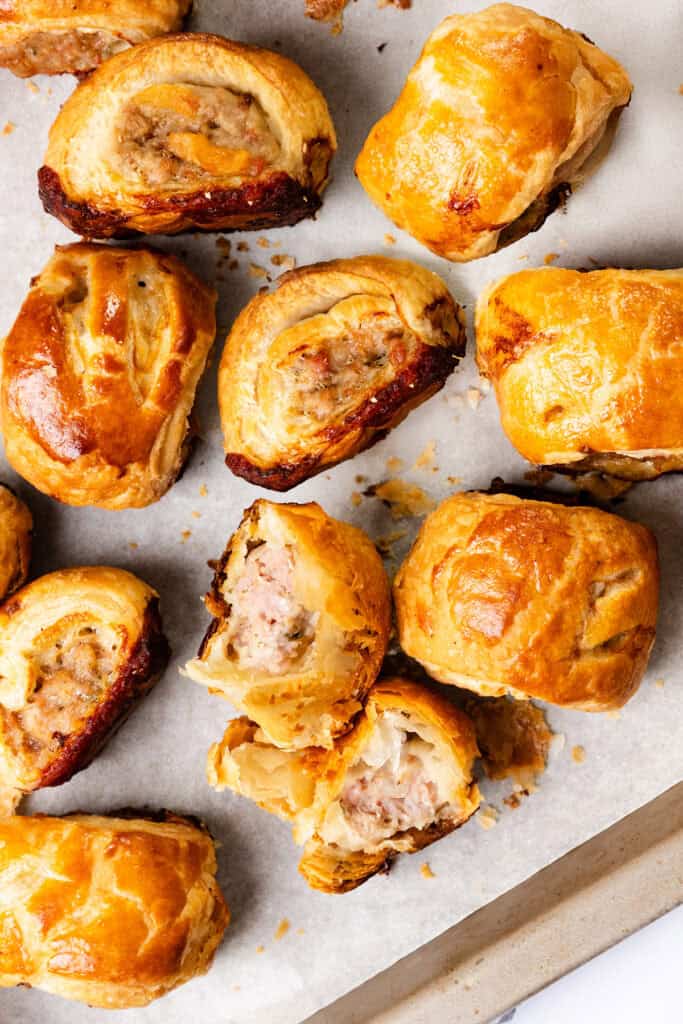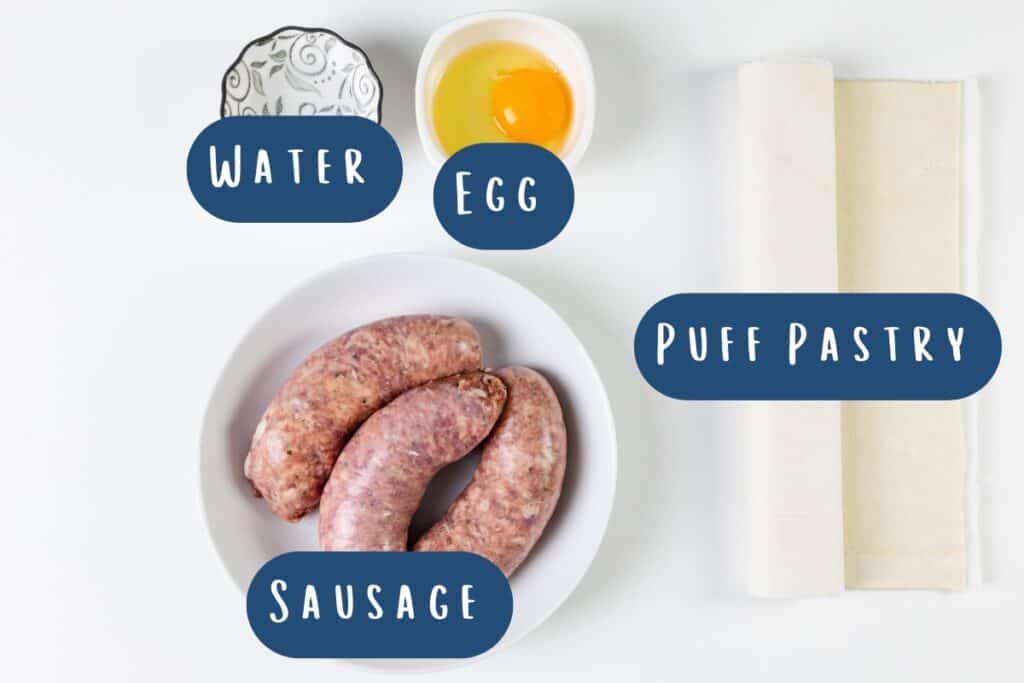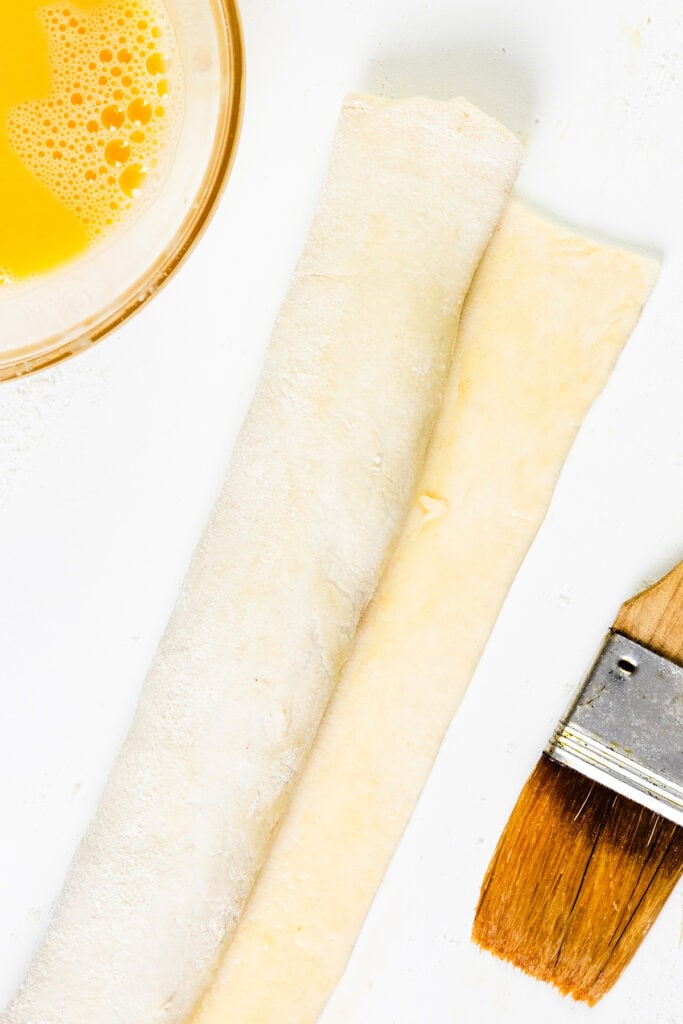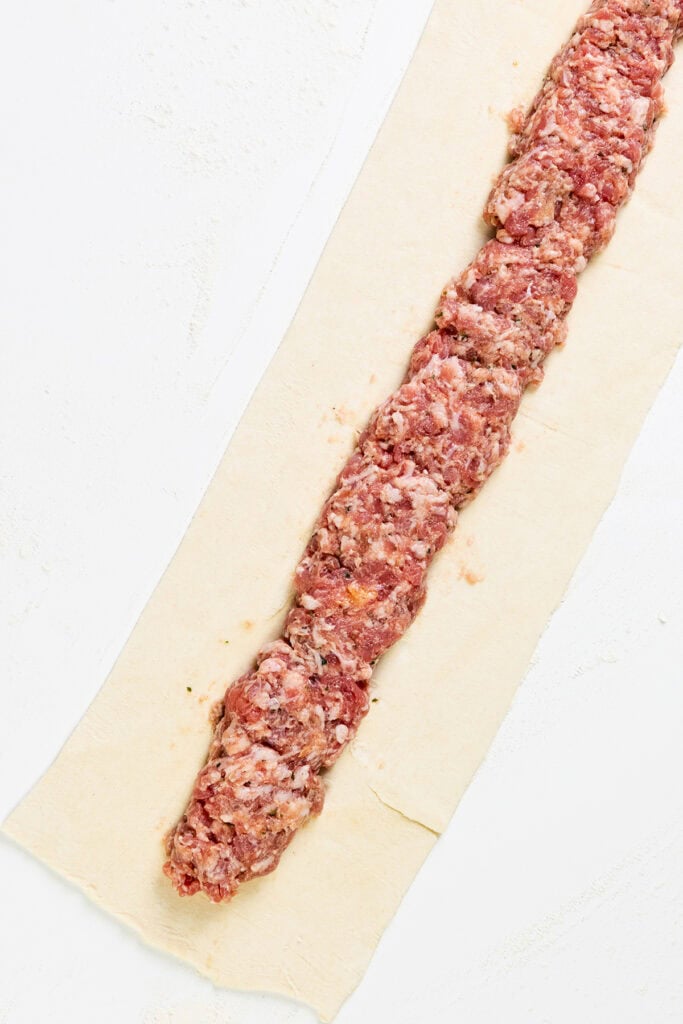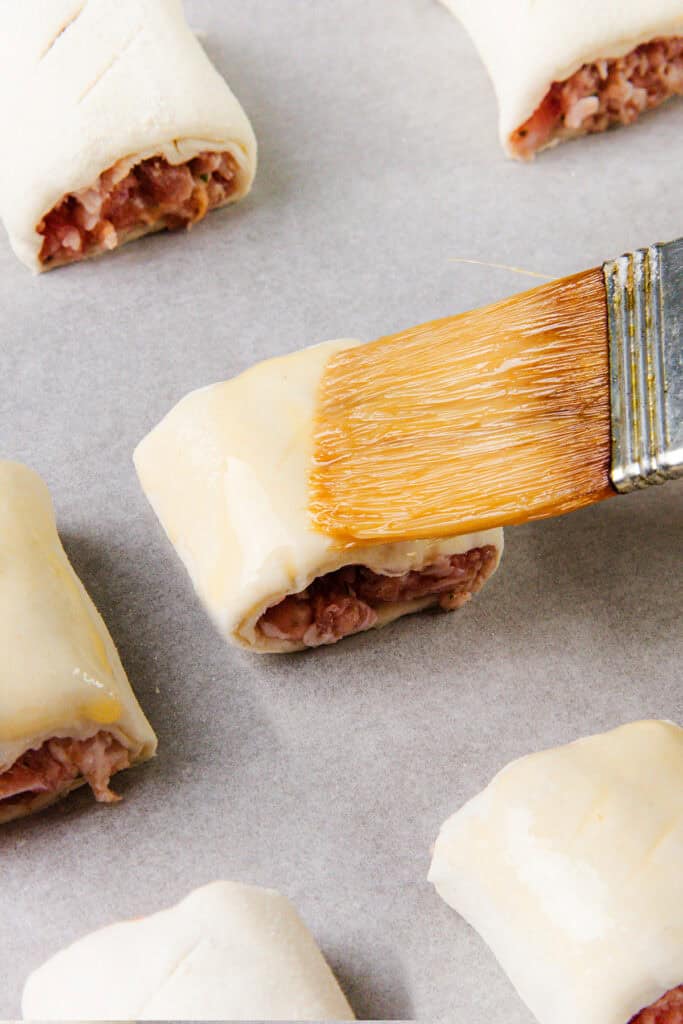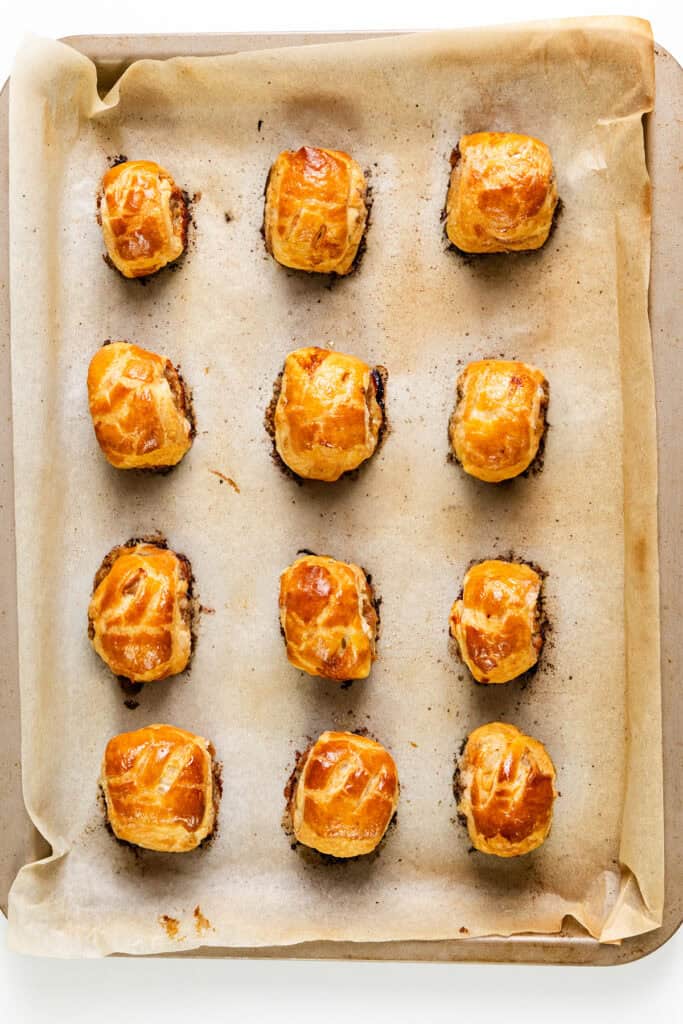Having lived in England for 15 years, I came to love how central sausage rolls are to holiday traditions. Every Christmas, English my mother-in-law would make a big batch, and it was something my husband always looked forward to each year. In fact, the whole family loved them so much that it wasn’t uncommon for a playful fight to break out over the last one on the tray! Since moving back to the US, I’ve taken on the task of keeping that tradition alive, using her tried-and-true recipe. The best part? They’re incredibly easy to make, yet they always steal the show with their juicy, flavorful sausage wrapped in buttery, flaky puff pastry. Whether it’s for a holiday celebration or just a special treat, they never fail to bring a little bit of British comfort to our table.
A Buying Guide for Puff Pastry
I use my homemade puff pastry, but store-bought is widely available if you don’t have time to make your own. Quality is key when selecting puff pastry. Look for an all-butter variety in the frozen section for the best texture and flavor. This will ensure a golden and crispy result. If you need to substitute, store-brand puff pastry may not be as flaky, but it will still work well for this recipe.
Step By Step Instructions
You can find the full, printable recipe at the bottom of this post (click the button above), but you can read a summary with step-by-step instructions and photos for each step below.
1. Preheat the Oven
Preheat your oven to 425°F (220°C) to get it nice and hot. This ensures that the puff pastry bakes quickly and evenly.
2. Prepare the Puff Pastry
Roll out your defrosted puff pastry sheets on a lightly floured surface. Cut each sheet in half to form long rectangles. If you’re using two sheets of pastry, you should have four long pieces. Keep the pastry cold as you work with it—this will help it puff up in the oven!
3. Prepare the Sausage Filling
If using sausage links, slice each link lengthwise and peel off the casing. Transfer the sausage meat into a bowl. Divide the sausage into four equal portions for each roll.
4. Assemble the Rolls
Take one portion of sausage and shape it into a log along the length of one pastry half. Repeat with the remaining sausage portions. The sausage should run down the center of each piece of pastry.
5. Roll and Seal the Pastry
Carefully fold the pastry over the sausage, wrapping it tightly. Pinch the edges to seal the roll. Place the seam side down on a baking sheet lined with parchment paper. Use a sharp knife to cut each long roll into six equal pieces, about 2 inches long each.
6. Vent and Brush with Egg Wash
Using a knife, make two or three small diagonal slashes on the top of each roll. In a small bowl, beat the egg with 1 tablespoon of water to make the egg wash. Brush the tops of the sausage rolls with the egg wash for a beautiful golden finish.
7. Arrange on the Baking Sheet
Place the rolls on your prepared baking sheet, spacing them about 2 inches apart. This allows the pastry to cook evenly and helps each roll puff up.
8. Bake
Bake in the preheated oven for about 20 minutes, or until the pastry is golden and crispy. Rotate the pan halfway through baking for even browning.
9. Serve
Let the sausage rolls cool slightly before serving. Serve with your favorite dipping sauce, like honey mustard or ketchup, if desired. To freeze: After baking, let the rolls cool completely, then freeze them in a single layer on a baking sheet. Once frozen, transfer to a freezer bag or airtight container. Reheat in the oven at 350°F (175°C) for 10-15 minutes. Erren’s Kitchen is written and produced for informational intentions only. We are not certified nutritionists, and the nutritional information found on this site has not been assessed or authorized by a nutritionist or the FDA. The nutritional information found in our recipes is offered as an estimate and should not be considered a guarantee or fact. The estimated data is provided as a courtesy and calculated through a third-party online nutritional calculator, spoonacular API. Although we do our best to provide accurate nutritional information, these figures should be considered rough estimates. Many factors, such as brands or products purchased and the nutritional fluctuations that naturally occur in fresh produce, can alter the effectiveness of the nutritional information in any recipe. Furthermore, various online calculators provide different results depending on their particular algorithms and nutrition fact sources. To obtain the most precise nutritional information in a provided recipe, you should calculate the nutritional information with the exact ingredients you are using when preparing the recipe using your preferred nutrition calculator.



